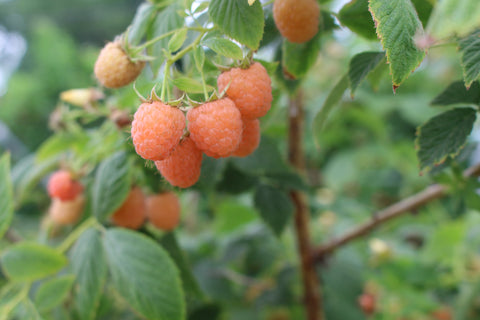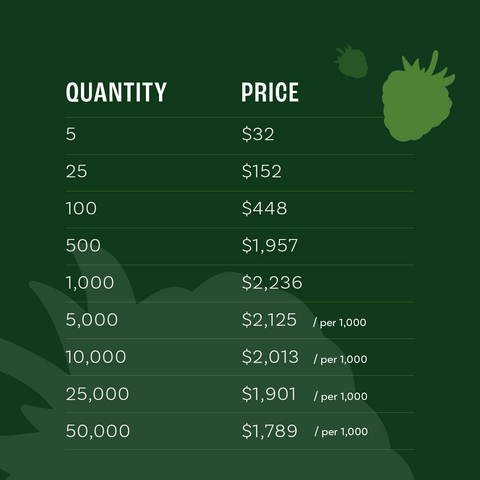

Double Gold Raspberry
CommercialDouble Gold’s deep blush, golden champagne color berries are medium in size and have a conic shape and an excellent, sweet flavor. The plant grows vigorously, suckers freely, and shows tolerance to diseases. Double Gold can be grown as both a floricane (summer) and primocane (fall) producer. This plant is suited for U-pick and local commercial sales.
Features:
- Vigorous: Double Gold rows vigorously, suckers freely, and shows tolerance to diseases.
- Double Crop Choice: Double Gold can be grown as both a floricane (summer) and primocane (fall) producer.
- Sweet Flavor: Double Gold’s deep blush, golden champagne color berries are medium in size and have a conic shape and an excellent, sweet flavor.
- Breeder: Dr. Courtney Weber from Cornell University
- Recommended Hardiness Zones: Zones 5–7
How much sunlight does a raspberry plant need?
Raspberry plants should be exposed to direct sunlight for at least 8 hours per day.
How do I properly space my raspberry plants?
Raspberry plants should be spaced 18”–24” in the row for red and yellow raspberries, 20”–24” in the row for black raspberries, and 8’–12’ between rows.
Do you mulch raspberry plants?
You should lightly mulch your raspberry plants with weed seed-free straw during establishment to help control weeds and help the soil retain moisture. Leaves, grass clippings, and wood bark are not recommended as they may become matted or too heavy, impeding the growth of new canes.
Do I need to trellis my raspberries?
Trellising raspberries is one of the most important cultural practices. It doesn’t have to be expensive and time-consuming. A simple T-bar post with twine will do.
What is a fall-bearing raspberry plant?
A fall-bearing raspberry plant bears some fruit the first fall of planting year, and either summers or falls after that depending on how it is managed. Most fall-bearers will produce the best crop if canes are cut down each year and only allowed to fruit in the fall.